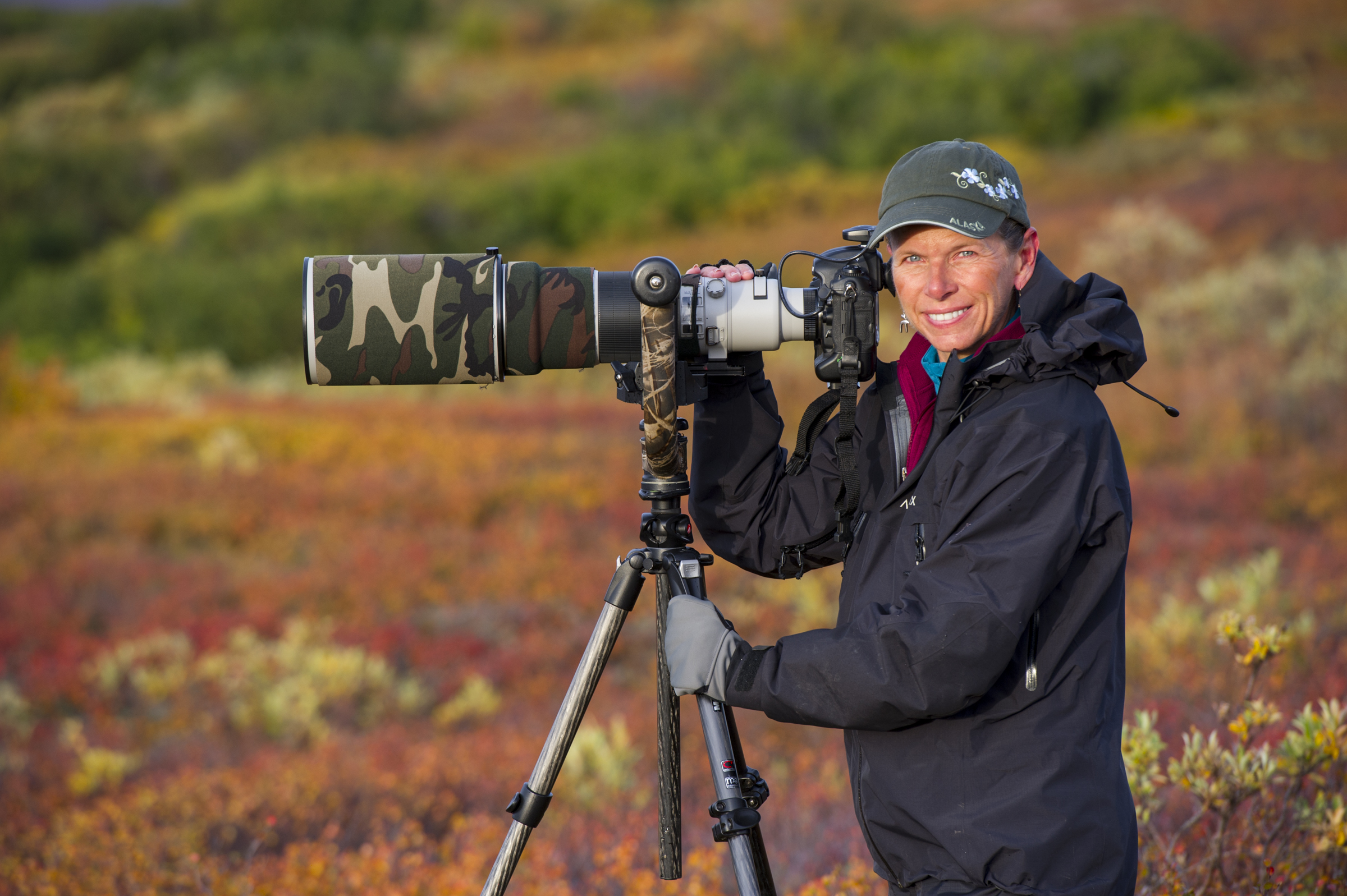Gifts from Mother Nature
Dee Ann Pederson
Professional photographer from Houston, Texas
Twenty years ago, you wouldn’t have found Dee Ann Pederson anywhere near wilderness. Instead, you’d find a workaholic behind a desk at her consulting firm – until one day, when a friend told her, “You don’t do anything but work. You really should try to find an escape!” As a teenager, Dee Ann worked for her former teacher doing wedding photography and portraits. So right after that conversation, she bought a new camera and began photographing things like flowers, sunsets, waterfalls. Then she took trips into the Rocky Mountains. Finally she found herself in Denali National Park in Alaska with some other nature photographers, during the fall colors. This is where her first epiphany happened. “We were sitting in the tundra,” she recalls, “and there was a huge bull moose … and he was absolutely extraordinary. And I remember the sandhill cranes flying above, circling, riding the thermals, and you could hear them. It was just so peaceful. I sat with this bull moose for probably six hours? And I realized I never looked at my watch – not once … and I was so at peace.” No meetings, no deadlines – just nature.
Dee Ann’s second epiphany, and the event that finally drove her to pursue a career in photography, was a visit to a Maasai village during a wildlife photography trip to Kenya. She describes the moment she walked into this village: “I just looked around, and all I could think about was, I’m going to go home and flip on my lights. And I’m going to turn on my water and have clean water. And I’m going to go home and get in my Jaguar, and I’m going to drive home from the airport. … I could not stop crying … because all I wanted to do was do more … I said to myself, ‘You know what, I really don’t want to do this office job anymore, I want to do something where, when I leave the face of this earth, it might make a difference.‘”
Dee Ann left the corporate world behind and became a successful nature photographer. She’s placed in the Windland Smith Rice international photo competition seven times, and her photo of a rearing caribou (right) was the winner of the wildlife category in 2016. She leads nature photography tours in several countries, and each tour group becomes a sort of family. She’s published her own wildlife photography calendar every year since 2004. And of course she still travels all over the world doing her own thing – Alaska, India, Iceland, Tanzania, Antarctica, and more. She’s much happier now than she would’ve been if she’d stayed in the business world: “I don’t care if it’s pouring down rain – it’s better than sitting behind a desk!”
These days, Dee Ann tends to spend more time watching than she does photographing. She’s learned a tremendous amount while spending time with wild animals, especially about how habitat and resources affect behavior. For instance, polar bears are normally quite aggressive and unsociable, but Dee Ann has seen the polar bears of Kaktovik, a whaling village on Barter Island in the far north of Alaska, who share whale leftovers and appear to get along with each other. And it’s not just about behavior and habitats, but also about certain animals’ quirks and personalities. Every year for over fifteen years, she revisited the same few coastal brown bears on the Alaska Peninsula, and she formed deep personal connections with them. She watched some of these bears – Digger, Ursula, Audrey – grow up and have cubs of their own. This year, 2017, was the first year that Dee Ann was not able to return to Alaska since 2001, and that’s because Hurricane Harvey hit her home town. In fact, Dee Ann made the time to chat with me while in the middle of storm cleanup, and I’m inexpressibly thankful for that.
Because of those deep connections, Dee Ann has a certain reverence for nature and wildlife. Good wildlife photographers take safety precautions and don’t disturb their subjects, but for her, it goes beyond that. She explains: “You have to always respect that they’re wild, you have to always respect that you’re in their place, and that they’re allowing you to be there. And something that’s really important to me about my experiences with nature and with animals is to always tell them ‘thank you’ when I leave, you know, ‘Thank you for allowing me to be a part of your world, and for allowing me to be in this place where I could experience this with you.’”
When you revisit a wild place over and over, you start to see changes over time – both good and bad. Seasonal events like monsoon flooding in Tanzania have moved around due to climate change. Humans spread out and wilderness disappears. Animals become harder to find, even in protected places like National Parks, because so many people are out looking for them. Yet many of those people are interested in visiting these places because of photos from people like Dee Ann, who share the wildlife they see with thousands of people via travel advertising and nature magazines. Without photographers, people might never see those wild places and animals, and probably wouldn’t care about them. Dee Ann says of wild animals: “If they’re isolated then they don’t have a voice. But when people do see them, they have a voice, and then people get behind that cause.” On the other hand, the more people who are interested in wildlife and wild places, the more they’re touching the landscape and influencing habitats.
Dee Ann points out that wilderness is now easier to access than ever, and it’s good that so many people can experience it firsthand, but we must be cautious. Any small action can start a chain reaction, since all life is so interconnected. Dee Ann tells me, “I think it would be absolutely so sad if we ended up in a place where everything looks like supposedly it does on Mars, where it’s just barren ... It would just be devastating.” But hopefully with her amazing photography work, as well as the contributions of many other careful, respectful lovers of nature, we can work together to, as Dee Ann says, “become a whole to work towards keeping our natural world as intact as possible.”
Quick Facts
Favorite places to take photos: The Alaska Peninsula for her coastal brown bears, Tanzania for the people and culture as well as the wildlife, India, and Antarctica
Favorite photo subjects: Brown bears, big cats like leopards and tigers (“I remember the first time I saw a Bengal tiger in the wild… I had a knot in my throat and tears coming out of my eyes … When you see this majestic cat walk out of that bamboo, they are royal!”), and penguins of all types because they’re so adorable and entertaining.
What’s next for Dee Ann: Stepping back a bit from the business side of things and focus on reconnecting with nature, doing new things, and just having fun! Also photographing every bear species in the world, putting together some photography books, and maybe getting involved in projects focusing on salmon life cycles in Alaska, and how that affects her coastal brown bears.
Where you can find her online: www.windowsofnature.com
Dee Ann's Photography Tips
- Be diligent and tenacious – don’t give up on getting amazing shots!
- Thoroughly research a new place before you go there.
- Learn about animal behaviors so you can anticipate what they might do.
- Exercise patience, and don’t be on a schedule: “Nature’s not on a schedule,” Dee Ann points out. Stay in the moment and enjoy it.
- To truly connect with the animals and the place, you have to go back again and again and again.
- “I think if you’re positive and appreciative and you just are there to receive the gifts, then you’ll have amazing experiences” – Dee Ann
- If you’re wanting to go pro, really work on your business skills so you can get your foot in the door: writing good letters and emails, networking, talking to editors to figure out what exactly they’re looking for, meeting deadlines, etc.











